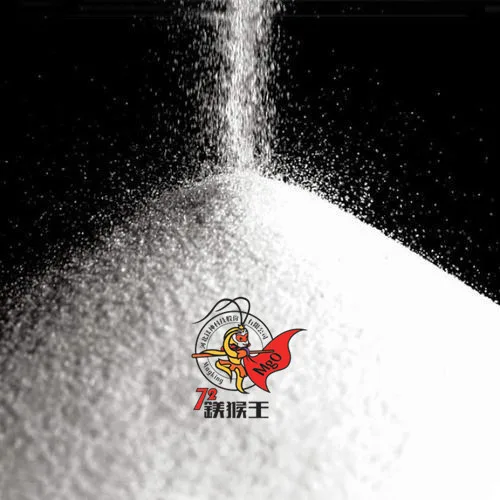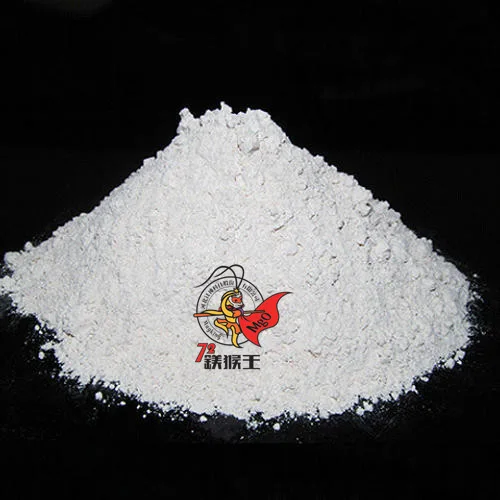Magnesium oxide (MgO) is a highly versatile compound with applications across multiple industries, including refractory materials, ceramics, agriculture, medicine, and environmental protection. Its unique physical and chemical properties, such as high melting point, chemical stability, and low solubility in water, make it an essential material in various fields. In this article, we will explore the properties, uses, and benefits of magnesium oxide, along with frequently asked questions about its applications.
What is magnesium oxide?
Definition and chemical formula
Magnesium oxide (MgO) is an inorganic compound composed of magnesium and oxygen. It is commonly produced by heating magnesium carbonate or magnesium hydroxide, leading to thermal decomposition. The resulting white powder is highly refractory and chemically stable, making it suitable for various industrial applications.

Physical properties
- Appearance: White, odorless powder
- Melting point: ~2852°C, making it highly heat-resistant
- Density: Approximately 3.58 g/cm³
- Solubility: Low solubility in water, but soluble in acids
- Electrical properties: Acts as an electrical insulator
Chemical properties
- Alkalinity: Magnesium oxide is an alkaline oxide, meaning it reacts with acids to form magnesium salts and water.
- Reactivity with water: It has low solubility in water but can slowly react to form magnesium hydroxide (Mg(OH)₂).
- Stability: Chemically stable in various environmental conditions, resistant to decomposition under high temperatures.
Uses of magnesium oxide
Refractory materials
Due to its exceptionally high melting point and thermal stability, magnesium oxide is a key component in refractory materials. It is widely used for lining steel furnaces, cement kilns, and glass production equipment to withstand extreme temperatures.
Ceramics and glass
Magnesium oxide plays an important role in the production of ceramics and glass, improving durability, resistance to thermal shock, and mechanical strength. It enhances the quality of ceramic products, including tiles, crucibles, and insulating bricks.
Environmental protection
Magnesium oxide is commonly used for neutralizing acidic wastewater and flue gases, reducing environmental pollution. It also aids in the removal of heavy metals from industrial waste, making it an essential component in environmental treatment processes.
Agriculture
In agriculture, magnesium oxide is used as a soil amendment to correct magnesium deficiencies, promoting plant growth. It also helps regulate soil pH levels, improving nutrient availability and overall soil health.
Medicine
Magnesium oxide has several pharmaceutical applications. It is widely used as an antacid to relieve acid reflux and indigestion, as well as a laxative to relieve constipation. Its biological safety and effectiveness make it a reliable choice in medicine.
Industrial fillers
Magnesium oxide is utilized as a filler in the rubber, plastics, and coatings industries. It enhances mechanical strength, heat resistance, and electrical insulation properties in rubber compounds, adhesives, and polymers.
Food Industry
Magnesium oxide is used as a food additive to regulate acidity, stabilize food textures, and fortify foods with magnesium. It is also employed in the production of powdered food mixes to prevent caking and improve flow properties.
Others
- Catalyst carrier: Used in chemical processes as a support for catalysts.
- Electrical insulation: Applied in the manufacturing of electrical and thermal insulating materials.
- Flame retardants: Enhances fire resistance in plastics, textiles, and construction materials.
Benefits of magnesium oxide
High temperature resistance
Magnesium oxide’s melting point of approximately 2852°C makes it ideal for applications requiring extreme heat resistance, such as refractories and furnace linings.
Chemical stability
Its ability to remain stable in harsh chemical environments, including resistance to acids and high temperatures, makes it valuable for industrial and environmental applications.
Versatility
Magnesium oxide is used across numerous industries, including construction, agriculture, medicine, and manufacturing. Its adaptability and multi-functional properties make it a widely sought-after material.
Biological safety
In medicine and food-related applications, magnesium oxide is recognized for its safety and minimal side effects. It is commonly used in dietary supplements and pharmaceuticals.
Cost advantage
As an abundant and naturally occurring mineral, magnesium oxide is cost-effective and widely available. Its affordability enhances its appeal in industrial applications, making it a preferred material in many sectors.
Conclusion
Magnesium oxide is a highly valuable compound with applications spanning from industrial manufacturing to agriculture, medicine, and environmental protection. Its unique physical and chemical properties make it indispensable in various industries, offering benefits such as heat resistance, chemical stability, and cost-effectiveness. Whether used as a refractory material, a neutralizing agent, or a pharmaceutical ingredient, magnesium oxide continues to play a crucial role in modern applications.
FAQs
1. Is magnesium oxide safe for human consumption?
Yes, magnesium oxide is generally safe when used in appropriate amounts. It is commonly found in dietary supplements and medications, but excessive intake can cause digestive issues such as diarrhea.
2. How does magnesium oxide compare to other magnesium compounds?
Magnesium oxide has higher magnesium content than other compounds like magnesium carbonate or magnesium chloride. However, it has lower water solubility, affecting its absorption in the body.
3. Can magnesium oxide be used in water treatment?
Yes, magnesium oxide is effective in neutralizing acidic water and removing heavy metals, making it a valuable component in water treatment processes.


